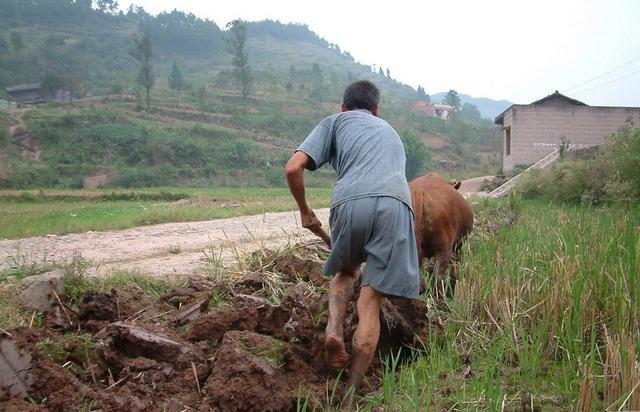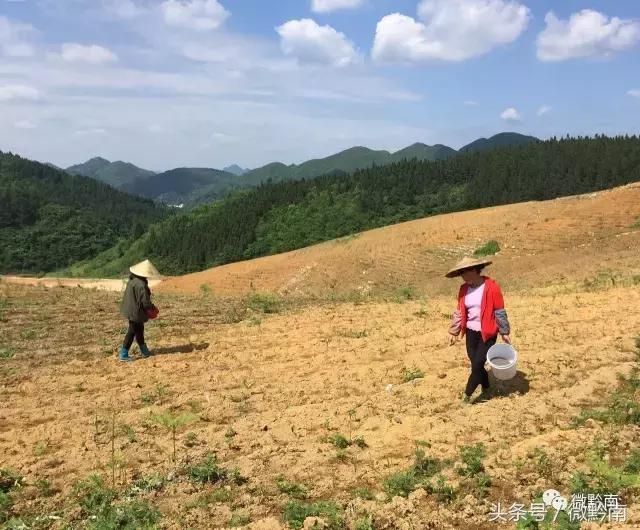Xiao Gu said that in the 10th phase of the policy, the promotion of "changing grain to feed" has been intensified, which people will have the opportunity to get rich?
Hello, everyone. Xiaogu is here to introduce you to agriculture-related policies again!
"Grain to Feed" is an agricultural planting reform guided by the state since 2015, which aims to alleviate the high corn stocks. From 30 pilot counties in 2015 to 17 provinces and regions in the whole "sickle bend" area and Huang-Huai-Hai corn producing area this year, the country's determination and action force to promote "grain to feed" can be seen. A few days ago, the Ministry of Agriculture issued the "implementation Plan for changing Grain to Feed", which gave guidance to the further work of "changing Grain to Feed". So today we're going to talk about what "grain to feed" is and what else we can grow if we don't grow corn.
The purpose of "changing grain to feed" is to popularize forage planting in areas suitable for growing high-quality forage grass and reduce the planting area of common seed corn. This year, it will still be promoted in 17 provinces, including Hebei, Shanxi, Inner Mongolia, Liaoning, Jilin, Heilongjiang, Anhui, Shandong, Henan, Guangxi, Guizhou, Yunnan, Shaanxi, Gansu, Qinghai, Ningxia and *. If you don't grow ordinary corn, what should you plant? Silage corn is the most frequently mentioned. Don't call it corn. This silage corn is nothing like ordinary corn. Silage corn is not a variety of corn, but a general term for a kind of corn used for silage fermentation to make feed. Ordinary corn harvests corn kernels, but silage corn harvests straw. Silage corn needs to be fermented in the silage cellar after harvest, and it will become excellent feed for cattle and sheep after fermentation. So is silage corn making more money or ordinary corn making more money? Taking 2015 as an example, the income per mu of whole plant silage corn is about 100 yuan higher than that of corn grain. At the same time, planting whole-plant silage corn also solves the problem of corn drying, saves this link, not only reduces the input of manpower and material resources, but also avoids mildew caused by drying.
Silage corn is so good, don't swarm into silage corn. In addition to silage corn, the state also strongly supports the development of alfalfa, forage oats, silage corn, forage sorghum, fodder millet, forage barley and other high-quality forages according to local conditions. Who are so many kinds of forage grass planted and sold to? Cattle and sheep farming enterprises, of course. For aquaculture enterprises, these high-quality forages not only have low cost, but also have good effect on meat and milk production. Taking silage corn as an example, the whole plant silage corn was popularized in dairy farms, the average daily milk yield of dairy cows increased by 3 kg, the average per unit yield of adult cows reached 8 tons, the feed cost of producing 1 ton milk was saved by 300 yuan, and the quality indexes such as milk protein were also significantly improved. when beef cattle were fed whole plant silage, the feed cost was saved by nearly 1000 yuan per head.
When corn growers switch to forage grass, the biggest concern may be the problem of funds. A machine suitable for forage harvesting costs dozens or even millions of machines, which growers basically cannot afford; in addition, forage sealing and fermentation technology is relatively professional, and fermentation failure will be caused once improper operation. For this reason, it is specifically mentioned in the implementation Plan for the conversion of Grain to Feed that this year's central financial subsidy funds are mainly used for the collection and storage of high-quality forage, supporting new business entities such as large-scale herbivorous livestock farmers or professional silage collection cooperatives. The name of the subsidy varies from place to place. For example, the subsidy of "grain to feed" in Shandong Province is called the grain to feed subsidy of the silage special corn demonstration slice construction project and the grain to feed subsidy of the forage (alfalfa) demonstration base construction project. This year, the central government will further increase its subsidy funds, and the support funds will reach 2 billion yuan. Aquaculture enterprises, whole-plant corn silage production and processing enterprises, forage specialized cooperatives and alfalfa production and processing enterprises in "grain to feed" promotion areas can actively apply for local "grain to feed" subsidies, and the chances of success are very high.
All right, the above is the policy of Otani in this issue. If you have any policies you want to know, you can leave us a message and we will try our best to answer it for you. I'll see you next time!
- Prev

Story: the doctor gave up his annual salary of one million and went home to farm. A few years later, he helped the whole village get rich and won praise.
Story: the doctor gave up his annual salary of one million and went home to farm. A few years later, he helped the whole village get rich and won praise.
- Next

Qiannan small town barren mountain becomes "Jinshan"! Their secret to getting rich is
Qiannan small town barren mountain becomes "Jinshan"! Their secret to getting rich is
Related
- A course of planting techniques and methods on how to grow carrots
- How to plant the latest tulips?
- Is it better to pick tea in the morning or in the afternoon? When is the best time for tea to be picked? what is the third or fifth tea?
- Launch Yuanxiao Happy combination Haocha + Tea Yuan healthy Taste
- Penghu Tourism "Fireworks 20 Parade with You"
- 2022 West Lake Happiness holds "Digital Revitalization Voucher" and draws iphone13 and laptop.
- Banqiao Fuzhou social houses are designed to change start-up combined with police elimination to create a safe and livable environment
- The convenient measure of "mechanical weeding" in Xinbei has been abused and the Agriculture Bureau has imposed heavy penalties on the illegal land consolidation.
- Changgeng University Joins Hands with Four Memory Factories to Rescue Memory Talent Shortage
- The list of Taiwan's top 100 MVP managers is listed by the Director-General of the Farmers' Association of Sanxia District.

